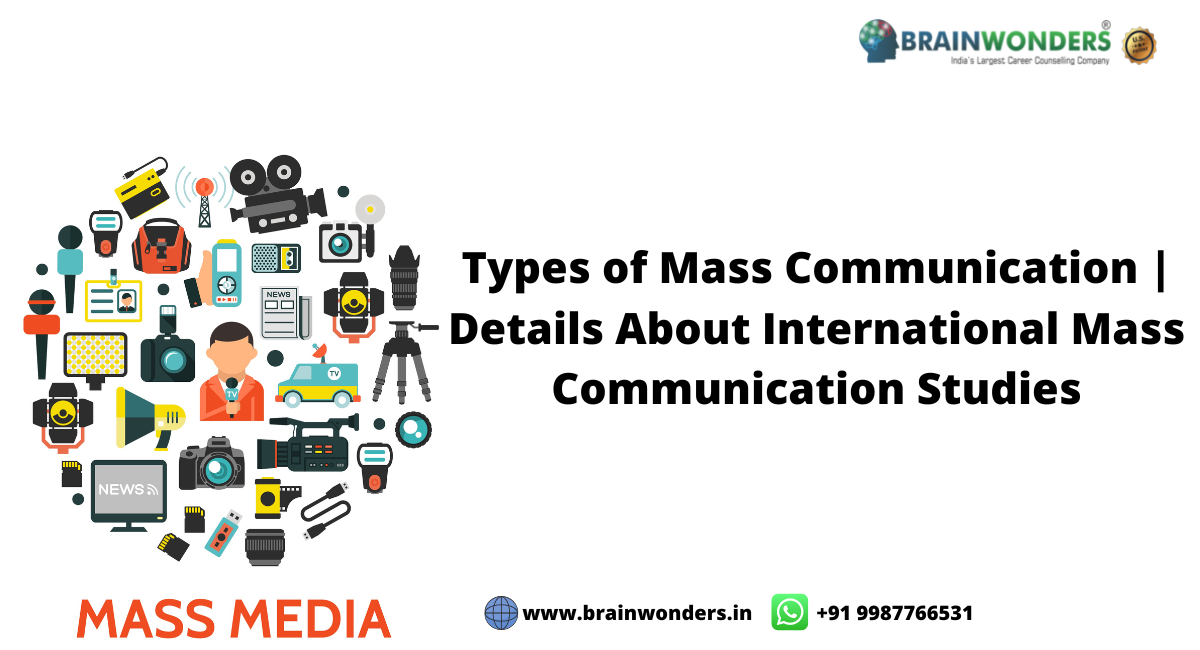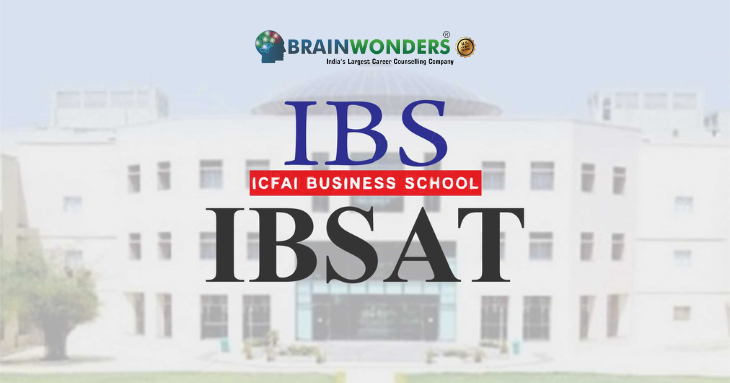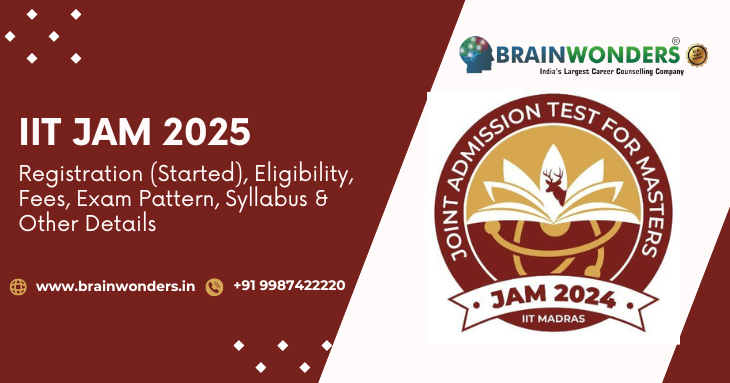

Take Brainwonders Career Test and make the right decisions for your college and course ahead
Let your unique personality, strengths, and traits guide to make the best decdision of your life!
Blog
19 May,2023 | By Brainwonders

Mass communication has been sustained since earlier decades. During that time, mass media existed primarily in non-verbal and verbal communication forms. Moreover, with the advancement in time, the mass media has changed immensely over the years. The mass media field is now transformed into a global social and public communication platform. People can express their ideas freely with it.
With the advent of new mass communication technology, it has changed the way of being surrounded by social media platforms. The advancements and developments of technologies and innovation have led the media and mass communication industry on a route to colossal career opportunities.
Various mediums of mass media include books, radio, magazines, newspapers, journals, publications, social media platforms, and streaming services.
Mass Communication is a way of producing, transferring, receiving, and examining messages for a large audience through written or oral media. It is a broad field that considers not just how and why a message is created but also looks for why and how it is delivered. Print, digital media, social media, radio, television, and the internet are examples of mass communication. Strategic communication, integrated marketing communication, health communication, political communication and other related communications are a part of mass communication. Those who are interested in mass communication can pursue their study in the field by completing UG and PG degrees.
The mass communication experts can utilise their knowledge of essential concepts and practical media strategies to develop, design and examine effective communications for a targeted audience. Mass communication strategies are used by media managers, broadcast professionals, advertisers, marketers, mass media people, content writers, graphic designers, public health educators, and illustrators in order to practically create and deploy strategic communication plans across various mass communication channels.
Visit Page: What is DMIT Test? How can DMIT Test be helpful in shaping one's Career - Brainwonders
People have different types of communication depending upon their regional languages and culture. It is one of the oldest forms of communication, which has been evidently used to transfer traditions and culture over generations. Traditional media used to use indigenous ways of communication for ages. Furthermore, this type of mass media differs as per each culture and society as every culture and religion has its own communication to its targeted mass audience.
Forms of Traditional Media
Print Media
Print Media is all about printed forms of news and information. Before the invention of the printed press, printed materials were handwritten, which made mass distribution almost impossible. It is one of the basic types of mass media communication that deals with the types of mass media tools, making it convenient to reach a wider audience. Newspapers are considered to be the oldest form of mass media communication through which the latest events are mentioned. Mass media through newspapers falls under print media communication. Thus, print media evidently refers to newspapers and then expanded towards magazines, tabloids, promotional brochures, books, novels, comics, and journals.
Forms of Print Media
Since the advent of technology, the internet has considerably taken over all types of mass media because of the faster transmission of information and higher digital technology. It is interactive communication with users being the active producers of content and information. The internet is regarded as the highly communicative mass media, and it is playing an essential role in Digital Media/ New Media. In this Media, Social Media plays a predominant role through various channels of social media platforms, including websites, emails, blogging, animation, etc.
Broadcasting simply distributes video and audio content to a broader audience using electronic broadcasting. This Media allows easy accessibility of transformation of a message across a wider audience using the electronic broadcasting medium. It appeals to both auditory and visual senses, making it one of the effective forms of mass media.
Outdoor Media, also known as Out-of-Home Media, focuses on transmitting information and news when the public is outside their house. This Media gives significant importance to display advertising. Outdoor advertising focuses on attracting individuals to various products, social causes, or any developmental change in society. Thus, it is one of the most prominent types of mass communication and public welfare advertising, including billboards, banners, posters, and brochure distribution, among others.
Forms of Outdoor Media
This Media revolves around the transmission of information when consumers travel across various places. Transmit media includes display advertising on transportation and vehicles. Transmit Media is significantly used for huge brand promotion to millions of people who travel. Some people might even think this type of mass media communication is outdated. Yet, it is widely displayed on subway cars, buses, and transit stations, where passengers enter or travel across public transportation.
Forms of Transit Media
Visit Page: What is IQ Test? How to take an Online IQ Test? - Brainwonders
| Name of the Mass Communication Course | Type of Course | Duration |
| P.G. Certificate Course in Hindi Journalism | Post-graduate Certification | 1 year |
| Diploma in Journalism and Mass Communication | Diploma | 2-3 years |
| P.G. Diploma in Hindi Journalism | Post-graduate Diploma | 2-3 years |
| PG Diploma in Business Journalism and Corporate Communication | Post-graduate Diploma | 1 year |
| M.A in Journalism and Mass Communication | Post-graduate Degree | 2 years |
| BA in Journalism | Undergraduate Degree | 3 years |
| BA Hons Journalism & Mass Communication | Undergraduate Degree | 3 years |
| BA in Media Studies | Diploma | 3 years |
| BA Hons in Hindi Journalism & Mass Communication | Undergraduate Degree | 3 years |
| BA Hons Journalism & Mass Communication (BJMC) | Undergraduate Degree | 3 years |
| B.A. Film Making and Mass Communication | Undergraduate Degree | 3 years |
| Bachelor of Mass Media (BMM) | Undergraduate Degree | 3 years |
Visit Page: What is Aptitude Test? How to take an Online Aptitude Test? - Brainwonders
The following are some of the best universities in the world that offer mass communication courses.
Visit Page: What is Personality Test? How to take the Personality Test? - Brainwonders
The mass communication field opens several opportunities for various individuals. The most common career path for those with a degree in mass communication is that of a news reporter. The average salary of a reporter ranges from INR 1,50,000 to 2,00,000 annually. Moreover, the senior and mid-level positions in the same profile can pay in the range of INR 80,000 to 1,50,000 annually.
Furthermore, the content writers, editors, and photographers will be paid on different pay scales based on their skills and work experience. The average pay scale is between INR 1,50,000 to 2,00,000 annually.
| Career | Median Salary |
| Journalist | $51,000 |
| Photojournalist | $37,000 |
| Authors and Writers | $61,000 |
| News Anchors | $58,000 |
| News Producers | $30000 to $80000 |
| Advertising | $128,000 |
Visit Page: What is Career Counselling? How is Career Counselling helpful? - Brainwonders
With the advancement in technology, the growth of the mass communication field has suddenly risen. The growth in mass media communication has significantly risen, which has been beneficial for individuals to get settled across the various broadcasting, publishing, radio stations, etc. Along with that, the number of broadcasting, telecasting, publishing, and other companies that are involved in mass communication is also increasing. The target audience is being brought together, creating impeccable and scalable opportunities for those interested in pursuing jobs in mass communication.
A degree in mass communication opens lucrative possibilities for individuals who want to kickstart their career in television, radio, mass media, mass communication, journalism, multimedia, advertising, radio, and many more. Individuals in mass communication can pursue both undergraduate and postgraduate levels.
A Bachelor's degree in Mass Communication is studied for 3-4 years, depending on the country or university of study. Throughout the year, students also get additional placements before the final year of study in order to get to know how the work is done in the mass communication industry. This will help them get exposure in the mass communication industry.
Though every mass communication program, whether undergraduate, postgraduate, or doctoral, will be different, all the programmes will provide individuals with one-on-one tutorials, seminars, practical training workshops, and lectures. Mass communication programs can be tailored to act according to your interests.
Still unsure about your career? Well, you don't have to worry. Contact Brainwonders and get your queries solved by today itself!
Answer: Mass communication is broadly divided into five categories; print, radio, television, film, and digital. Each category uses different technologies to create content for a large audience.
2. How does Mass Communication work?
Answer: Mass communication works by creating content that a large group of people can consume. Technologies such as printing presses, radios, televisions, and computers allow content creators to reach a wide audience with their message.
3. What is the purpose of Mass Communication?
Answer: The main purpose of mass communication is to inform and educate people about current events, trends, social issues, or entertainment topics. By using various media outlets, mass communication enables people to stay informed and connected regardless of geographical boundaries.
4. What are the advantages of Mass Communication?
Answer: The primary advantage of mass communication is its ability to reach a wide audience. Other benefits include the ability to share information quickly and easily, cost-effectiveness compared to traditional forms of advertising, and the potential for increased engagement with the public.
5. What are the challenges associated with Mass Communication?
Answer: Several challenges come with mass communication. These include potential issues with accuracy and bias, privacy concerns, negative effects on personal relationships, and ethical considerations when portraying certain topics in a certain light.
Take Brainwonders Career Test and make the right decisions for your college and course ahead



,_Syllabus,_Pattern,_Old_Question_Papers.png)

